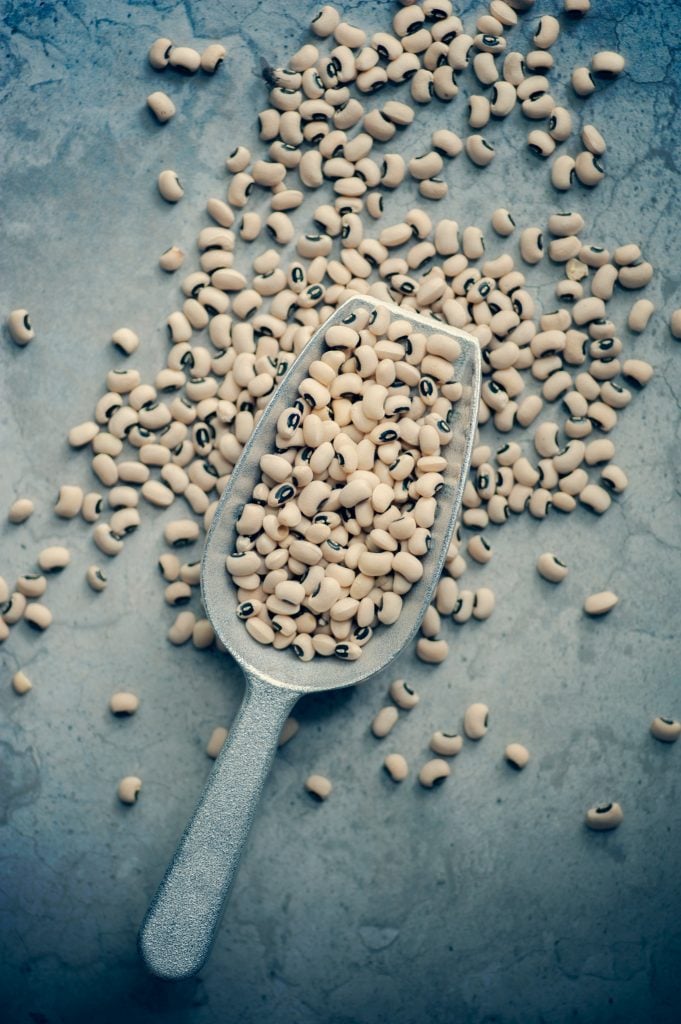
Have you ever wondered if soaking your beans is worth your time? Discover the importance of soaking beans and get my hack for how to soak beans quickly.
Most people soak beans to help reduce gas. (These gas causing molecules are called oligosaccharides.) By soaking the beans for a long period of time, it allows the dry beans to soften and the starch to gelatinize. (This gelatinization is what makes the beans digestible.) Recent research has shown that as long as the beans are properly cooked, soaking doesn’t reduce gas by a whole lot. However, that doesn’t mean that you should skip soaking!
Is Soaking Beans Necessary?
As long as you have the time to cook beans from dried, no, soaking is not necessary. However, soaking the beans greatly impacts how they s cook because it reduces cooking time and effects texture.
Normally, unsoaked beans take longer to cook. If you tried to cook dried beans without soaking, it would take about 4-6 hours. Soaked beans usually cook in a third of the time. That's a big win right there.
Then you run into the issue texture. Beans that haven't been soaked cook more unevenly, so many of beans end up almost done while others are mushy and busting out of their skins. Soaking your beans prevents this from happening, giving you uniform creaminess and texture.
Do Soaked Beans Go Bad?
If your beans are left soaking for too long they begin to ferment. This starts happening around 48 hours at room temperature. If you soak your beans in the refrigerator, it will take three or four days before fermentation begins.
There are no super obvious signs of fermentation other than tasting the beans. If they are fermented, you’ll taste an acidic, vinegary flavor. If you're nervous that your beans may have gone bad, taste test a bean before cooking.
How Long To Soak Beans?
Dry beans should be soaked for 24 hours. In this time, some of the excess air (oligosaccharides) releases from the beans. Once you are done soaking your beans, it is important that you strain out the water and rinse them. You may notice some white foam on the top of the water after soaking. This is excess starch and impurities that rise to the top. Unless you skim this off, it is likely to get trapped between the beans during straining. Rinsing them (while stirring them around) helps make sure that this gets removed.
Tips For Soaking Beans
There are a few tips that will make soaking your beans much better.
- Sift. Before you begin soaking, sift through the beans for tiny rocks, chunks of mud, or the occasional moldy bean.
- Rinse. Rinse the beans thoroughly with room temperature water. This will help wash away an excess dirt.
- Water. You only need enough water to cover the beans by one to two inches. The more water there is, the better job you’ll do of removing the oligosaccharides.
- Finish. You’ll know your beans are done soaking if you cut one open and it is a uniform color all the way through. If there is a dry spot in the middle, then they need more time.
How To Soak Beans Quickly
There are two main methods for quick soaking your beans. One of them parboils the beans before soaking, and the other method uses brining.
Brining is simply adding salt to your water before soaking. In research done by the Bean Institute, brined beans actually absorb very little of the sodium from the salt. Instead, the salt softens the natural pectin in the bean skins, allowing for the water to permeate the beans faster. This also makes the skins more flexible so the beans are less likely to burst and unevenly cook. This creates that soft, creamy texture that is so desired.
Although brining is my preferred method, it still take about four hours. Instead, I'll show you the quickest soaking method: parboiling.
How To Soak Beans Quickly:
- Place your beans in a large pot. Cover them with one to two inches of water.
- Quickly bring to a boil and cook for five minutes.
- Turn off the heat, cover the pot and let stand for one hour.
- Strain the pot of beans into a colander and rinse thoroughly with cold water.
If you would like to make flavored beans, you can add in herbs, vegetables, or other aromatics when you bring the water to a boil. The boiling water releases the flavor of the aromatics into the cooking liquid, which will then lightly impart itself into the beans during soaking.
Practice Makes Perfect: Recipes Using Dry Beans
Now that you’ve mastered how to cook beans from scratch, you’re ready to put those beans to good use. Here are some of my favorite recipes.
Happy Cooking! 🙂



What are your thoughts?